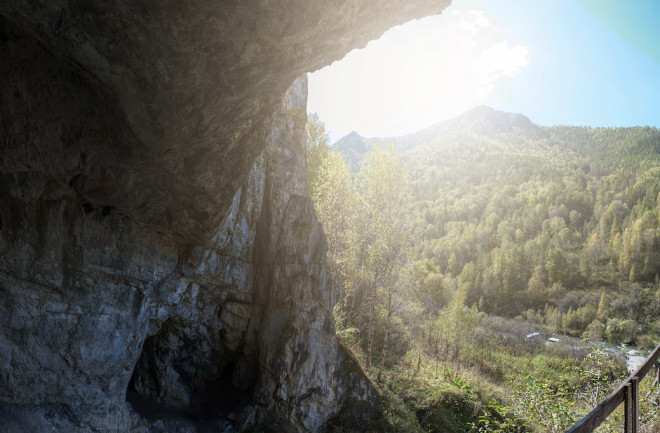This story was originally published in our January/February 2022 issue. Click here to subscribe to read more stories like this one.
One hundred thousand years ago, Neanderthals gathered in a cave perched 3,000 feet up in present-day Spain’s Atapuerca Mountains. While cooking and watching youngsters wrestle, they littered the floor with DNA in shed skin, spit and other bodily debris.
Dirt accumulated and protected the genetic material for millennia, even as humans and animals sheltered there. At the site, known as Estatuas, archaeologists have uncovered abundant stone tools and animal bones since 2008. The sole Neanderthal bone found — a toe tip with Swiss cheese consistency — seemed too precious to crush for DNA analysis. The scientists therefore couldn’t elucidate the inhabitants’ genetic traits and ties with other Neanderthal clans.
Instead, they searched the dirt for loose DNA. In 2018, researchers dropped into pits at Estatuas and collected sediment from layers that formed between 70,000 and 113,000 years ago. They had fetched nearly 800 sediment samples in 2017 from the Chagyrskaya and Denisova caves in southern Siberia, promising locations that had already yielded DNA-bearing fossils of Neanderthals and their Denisovan relatives.
At the Max Planck Institute in Germany, Benjamin Vernot and colleagues separated the human DNA from sequences belonging to animals, plants and microbes. The resulting Science and Nature papers demonstrated that dirt devoid of fossils and artifacts can conceal a genetic treasure trove. At Denisova Cave, researchers extracted human DNA fragments from over 220 sediment samples — versus nine fossils with genetic material. The dirt indicated that lineages of Neanderthals, Denisovans or Homo sapiens lived there at different points.
These results matched earlier fossil analyses — proving the methods’ utility for Estatuas, which lacked DNA data from fossils. There, sediment revealed that a new group of Neanderthals arrived around 100,000 years ago and differed genetically from the inhabitants from preceding millennia.
These filthy findings set an important precedent. Artifacts like stone tools are common, but fossils aren’t — particularly those with surviving DNA. Studies have recovered mitochondrial DNA (mtDNA) from sediment, but this genome snippet only reflects one maternal branch from the evolutionary tree. “It’s [been] impossible, at sites where DNA was not found, to connect the genetics with the really detailed work that archaeologists do” analyzing artifacts, says Vernot.
At least, until now: Vernot’s team captured nuclear DNA, a complete family tree record, from some samples and amassed far more mtDNA than prior studies had.
In 2021, other laboratories fished through dirt from caves in the countries of Georgia and Mexico and nabbed genome-spanning DNA from Ice Age Homo sapiens, wolf, bison and bear. Meanwhile, scientists at Harvard University and the Joslin Diabetes Center searched paleo-feces. Discovered decades ago in Utah and Mexico rock shelters, the 1,000- to 2,000-year-old turds contained digested food, including maize and grasshopper. At the University of Montana, molecular anthropologist Meradeth Snow dissolved small portions to extract DNA from the bacteria that once constituted people’s microbiomes.
Snow’s colleagues reconstructed 181 ancient microbial genomes and compared them to hundreds of modern stool samples from eight countries. Published in May’s Nature volume, the results indicated that today’s human microbiomes are far less diverse, likely due to antibiotics, processed foods and improved sanitation.
“It’s kind of staggering when you start to realize how much [gut flora] we don’t have anymore,” says Snow. This revelation could improve health today, since reduced microbiome diversity may contribute to ailments like obesity, diabetes and autoimmune diseases.

